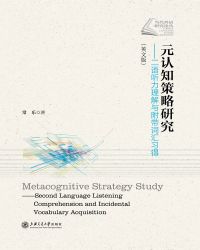5.5.2 Effects of Different Listening Conditions on Incidental Vocabulary Acquisition
您可以在百度里搜索“元认知策略研究:二语听力理解与附带词汇习得(英文版) 艾草文学(www.321553.xyz)”查找最新章节!
5.5.2 Effects of Different Listening Conditions on Incidental Vocabulary Acquisition
The research question in this chapter also asked about the effects of different listening conditions on learners' vocabulary acquisition. The posttest scores from the two listening cycles were averaged to give a clearer picture of the participants' vocabulary acquisition. Table 52 lists the percentage of each group's vocabulary scores.
As Table 52 shows, the learners in all the four listening conditions demonstrated vocabulary acquisition, especially in terms of receptive and form knowledge. However, it should be noted that vocabulary acquisition was under 50%in all cases and in the case of production the scores were very low.
Table 52 Vocabulary Acquisition of Each Group in Terms of Percentage
Note. Group A=listening one time; Group B=listening three times; Group C=schema raising+listening three times; Group D=inferencing training+listening three times.
The low production scores are not surprising given that the learners were only exposed to the target items a limited number of times (only once in the case of Group A) and that what was being measured was incidental rather than intentional learning. As Nation (2001, p.28) pointed out “productive learning is more difficult because it requires extra learning of new spoken or written output patterns. If productive use is needed, there must be productive learning. ”
However, the exposure was sufficient to achieve a degree of receptive ability, which precedes productive ability. That the participants who listened three times outperformed their peers who listened only once can be explained by the fact that the former were exposed to more input and had ample time to process the listening texts where the new vocabulary items were embedded. Time-on-task does seem to have been a factor. The learners in Groups B, C and D were given multiple opportunities to hear the new vocabulary items, which may have helped them develop auditory images of the new items. The learners in these groups enjoyed a considerable time advantage over the learners in Group A and clearly outperformed them in vocabulary acquisition. In short, the results show that the greater the time of the input, the more vocabulary acquisition takes place.
Though comprehending input does not guarantee acquisition of productive knowledge of new words, it can facilitate the acquisition of receptive knowledge. This is especially true where form acquisition is concerned, as there is clear evidence that the participants were able to better recognize the target words. The vocabulary form test required the learners to select the correct word from a number of written choices. To do this they must have been able to construct a phonological-graphological mapping of the target words. This shows that the exposure to words orally can assist their retention and also their subsequent recognition in written form.
There is some evidence that the inferencing training before three-time listening group (Group D) experienced the most beneficial listening condition. This group scored significantly higher than the one-time listening group (Group A) in the case of the immediate form posttest in Cycle 1. On the other hand, though the other two three-time listening groups (Groups B and C) also outperformed the one-time group in vocabulary acquisition in all the posttests, no statistically significant advantage was found. The finding that the inferencing strategy training was especially facilitative of vocabulary acquisition (especially in terms of recognition of word form) can be explained by the fact that the repetition of the listening texts in which the target words were embedded provided the participants in Group D with sufficient exposure to the target items while the five-minute strategy training helped them to attend to the form of these items.
Where acquisition of the meaning of the target words is concerned, the following two example sentences extracted from the original listening texts can illustrate how the linguistic contexts may have helped the learners in Group D to infer the meanings of the unknown words, namely the linguistic contexts provide clear clues that would have enabled the students to make use of their inferencing training.
Example 1: We could sell our own computers both overseas in the international market and at home in the domestic market.
Example 2: My address will change when I graduate. So I don't have a permanent address right now except the university.
The five-minute strategy training may have encouraged the learners in Group D to make an attempt to guess the unfamiliar words (such as the two target words in the examples above) when they encountered them. It can be hypothesized that they rehearsed the words mentally as they listened and this helped to familiarize them with the form of the words. The other two groups who listened to the texts three times may have been less inclined to employ inferencing strategies and focused more on simply trying to understand the general content of the texts in order to complete the listening tasks and thus attended less to the form of the words. Where incidental vocabulary acquisition is concerned, then, inferencing training does appear to have some effects. 元认知策略研究:二语听力理解与附带词汇习得(英文版)

